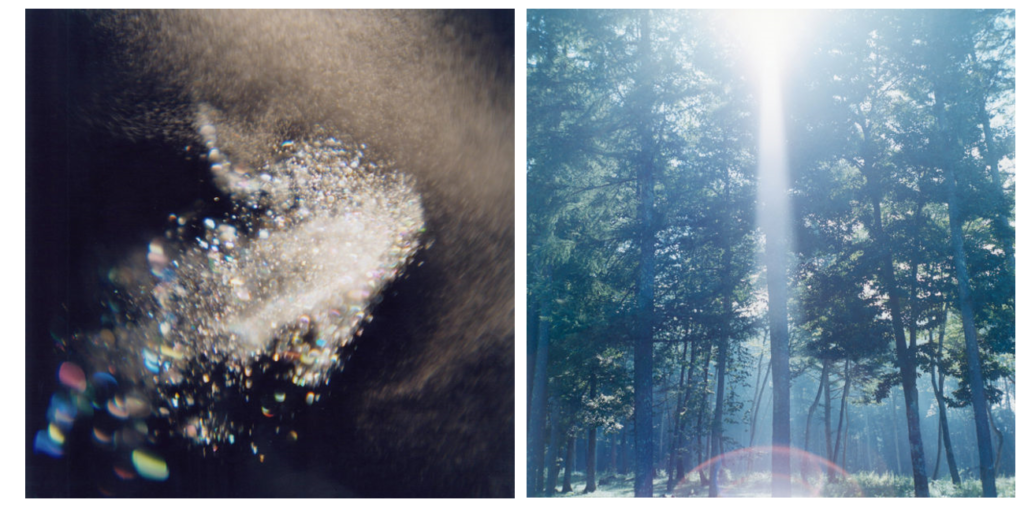Rinko Kawauchi is a Japanese photographer Her work is characterized by a serene, poetic style, depicting the ordinary moments in life.
Kawauchi’s art is rooted in Shinto, the ethnic religion of the people of Japan. According to Shinto, all things on earth have a spirit, hence no subject is too small or mundane for Kawauchi’s work; she also photographs “small events glimpsed in passing, conveying a sense of the transient. Kawauchi sees her images as parts of series that allow the viewer to juxtapose images in the imagination, thereby making the photograph a work of art[ and allowing a whole to emerge at the end; she likes working in photo books because they allow the viewer to engage intimately with her images
Kawauchi’s photographs have been described as ‘visual haikus’. Like haikus, they take note of a simple beauty in an uncluttered, non-metaphorical manner. It makes sense, therefore, that she composes haikus to accompany many of her photographs.
Haiku is a very short form of Japanese poetry in three phrases.
Whatever her mood, Rinko Kawauchi says that taking pictures is as natural to her as drinking tea: she seizes upon anything that strikes her; insects, children, animals, scraps of ordinary life, tiny scraps of life that embody – more often than not – the ephemeral (lasting for a very short time). Inexhaustibly, her work constructs a new kind of inventory, the unacknowledged purpose of which is to emphasize the connections between human beings and the natural or animal world.

Illuminance
She simultaneously released a series of three photographic books – UTATANE, HANABI, HANAKO from Little More publisher, which created an overnight sensation in the photography world in Japan. According to Shinto, all things on earth have a spirit, hence no subject is too small or mundane for Kawauchi’s work.
“The mindful awareness of what is special in simple things—which Rinko Kawauchi dedicates herself to in her photographs—must be contemplated on the background of the aesthetic concept of wabi-sabi. This philosophy postulates reduction, modesty and a symbiotic relationship with nature and is applied to many areas of life, whether architecture, dance, tea ceremonies or haiku poetry. Wabi-sabi allows room for “mistakes.” Applied to photography, the goal is not the “perfect photograph;” rather, expressivity and depth make a picture meaningful—and therein lies its beauty.” —LensCulture

The subject of Rinko Kawauchi’s work “Aila” (which means “family” in Turkish) is the depiction of the essence of life: animals, plants and people are shown in a sequence assembled by free association, which also includes both birth and death. Rinko Kawauchi’s fascination in fleeting beauty, the subjects of creation and destruction, and life and death are communicated in her images.
” Kawauchi’s subject matter is intimate, personal and almost sentimental, but her photographs are not trite. She seems to take pictures from the perspective of a girl who spent too much time gazing out of the window at school, studying bugs on leaves or watching dandelions disperse in the wind. “- Frieze, review.
Seen in the opposition of light versus shadows and life versus death, Rinko believes the fleeting nature of these dualities is what ultimately determines our fragile existence. Her ‘Light and Shadow’ Project (2011) explores this theme with a poignant series of images focused on one black and one white pigeon. All proceeds from the sale of the publication went to disaster relief funds for northeast Japan



Her images document everyday things, yet could not be described as documentary. They are generally light in tone, yet somehow dark in mood. They are almost hallucinatory, yet seem to capture something fundamental about the psychological mood of modern life.” – (Garry Badger on Rinko Kawauchi’s book “Utahan”)
I decided to explore the work of Rinko Kawauchi and to take inspiration from her in my project as i specifically like how she emphasises the light and soft colours in nature and beauty. I like how she photographs things that are ‘ephemeral’, that won’t last for long, addressing concepts like life and death in her work. I also like how photographs everyday situations and objects and emphasises the beauty that most people would.t notice, which is something i would like to do in my project as well.

